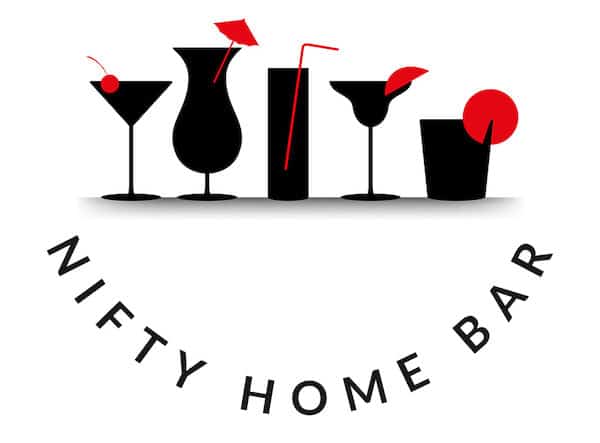After all the craziness of 2020, the home bar is making a bit of a comeback. But, what kind of bar should you build? In this post we’ll compare a wet bar vs dry bar, to help you decide.
What is a Wet Bar?
The answer to this question is fairly simple. A wet bar has plumbing – water supply and drainage. In other words: a sink.
It can be as simple as a single cabinet with a sink, to a full bar with front counter and back bar. It just needs water to make it wet.
Pro’s of a Wet Bar
A home wet bar is a great idea if your bar is located far away from the kitchen. Clean up is quick and easy because everything is right there. Especially if you have a bar dishwasher!
If you’re really into mixing cocktails, then a wet bar is a must-have. You can mix to your heart’s delight, and clean up while still being with your guests. Nobody wants to mix drinks for their friends, and then spend time shuttling between the kitchen and bar cleaning up. That doesn’t sound like fun.
Finally, a wet bar is a great idea if you enjoy entertaining and hosting parties. Not only will it corral all the bar paraphernalia (like a collection of cool retro cocktail shakers!), it provides added storage space, and most importantly, it keeps bar activity out of the kitchen area.
Cons of a Wet Bar
On average, a wet bar is going to cost more than a dry bar. In addition to the sink and faucet, you’ll need to run plumbing to the area. The price will depend on the location of plumbing lines relative to the wet bar location. Longer distances equal more money.
Some people view wet bars as a dated leftover, past its expiration date. Personally, I think it’s more likely that the style and finishes are what is dated.
If the term “wet bar” brings to mind espresso colored cabinets and spotty granite countertops, then yes, that’s dated. But, take a peek at some of the home wet bar designs on our Pinterest board, and you’ll see some quite stylish and trendy ideas.
Check out our post What is a Wet Bar? for more information.
What is a Dry Bar?
Conversely, a dry bar does not have plumbing. Often, these are a row of built-in cabinets, both upper and lower, that you can walk up to.
Pro’s of a Dry Bar
A dry bar is a great place to store all your bar equipment, alcohol, and glassware. Upper cabinets or shelving add even more storage and display space.
A dry bar is a relatively easy way to give your bar a permanent home. I’m a built-in cabinetry kind of person. So, while I love the look of bar carts, I really prefer the look of a built-in bar.
A dry bar is more budget friendly than a wet bar, and it’s very DIY-friendly.
Cons of a Dry Bar
The biggest drawback of a dry bar is that it makes cleaning up a little more difficult.. But, if you’re just using the bar as a display area and to serve drinks, or the bar is relatively close to the kitchen, then the lack of a sink isn’t a big deal.
Wet Bar vs Dry Bar: The Considerations
Now that we have everything defined, let’s get into some of the considerations when choosing a dry bar vs wet bar.
Neighborhood
Unfortunately, with real estate you have to consider what the neighbors do. Or don’t do, for that matter.
Consider what is popular in your neighborhood when deciding on a wet bar vs dry bar. If all the neighbors are ripping out their wet bars, then it’s probably not a good idea to add one in.
On the other hand, you don’t want to put in a dry bar when most of your neighbors have a wet bar.
Location
The bar location inside the home can have a big impact on deciding a wet bar vs dry bar. If the new bar will be close to the kitchen, then it doesn’t make a lot of sense to build a wet bar. So, put in a dry one.
Conversely, a basement wet bar makes a lot of sense. The bar will most likely be rather far away from the kitchen. A sink will make cleaning up quick and convenient. Same goes for a bar that is on the same floor as the kitchen, but relatively far away.
Use
Consider what you and your guests like to drink, when comparing a wet bar vs dry bar.
Wine and beer drinkers don’t really need a wet bar. On the other hand, for someone that likes to make fancy drinks or tiki cocktails a wet bar is a must have.
Do you want your home bar to be “the place” to hang out? Maybe you’ve always wanted a themed home bar displaying all your favorite team’s memorabilia, or even a home Tiki bar? Then you definitely need a wet bar with a front counter with seating and a back bar.
Size
When deciding on a wet bar vs dry bar, think about the required space. How much room do you have for a bar?
Dry bars are usually just cabinets along a wall. You’ll need a space at least 5′ deep (2′ for the cabinets and a minimum of 3′ for standing in front of them). The length can be as short as long as you want, but a minimum would be 24″-30″.
A wet bar can take up a substantial amount of space. If the wet bar will be a simple, straight run of cabinets, then the same dimensions as a dry bar can be used.
But, if you’re looking at a wet bar that has counter seating, with a front bar and a back bar, that’s going to take a lot more space. You’ll need at least a 5′ x 8′ footprint. For reference, that’s about the same size as a small bathroom.
Plumbing
Obviously, plumbing is a big factor when choosing a wet bar vs dry bar.
You need to have supply and drain lines that the new wet bar can tie into. Try to locate a new wet bar relatively close to existing plumbing lines.
Adding a wet bar in the basement might require tearing up the concrete slab in order to tie into the drainage. It’s not impossible, but it will cost more money than a dry bar.
Appliances
A dry bar does not usually have appliances. However, a nice under counter wine cooler is a good idea.
There are so many appliances that can be added to a wet bar. A wine cooler, kegerator, dishwasher, mini-fridge, and an ice maker are some of the more popular options.
Cost
For most people the decision of a wet bar vs dry bar will often come down to the costs. A wet bar is going to be more expensive than a dry bar for many reasons:
- plumbing
- sink & faucet
- backsplash
- flooring in the wet bar area
- additional lighting and electrical outlets
- finishes – wet bars usually have higher end finishes (granite or quartzite wet bar countertops, for example)
- project size – wet bars are usually bigger (more cabinetry and countertop), and have more appliances
Wet Bar vs Dry Bar: The Best Choice
So what’s the best choice when deciding to put in a wet bar vs dry bar? Unfortunately, there’s not a simple, once-size-fits-all answer. It really depends on the factors we’ve discussed.
Before deciding which type of bar to build, homeowners will need to do a little neighborhood snooping and research. Think about what you want, how you’ll use a home bar, and how much money you’re willing to invest. The more you think about the project beforehand, the more likely you are to have a successful project.
Pin this for later!


